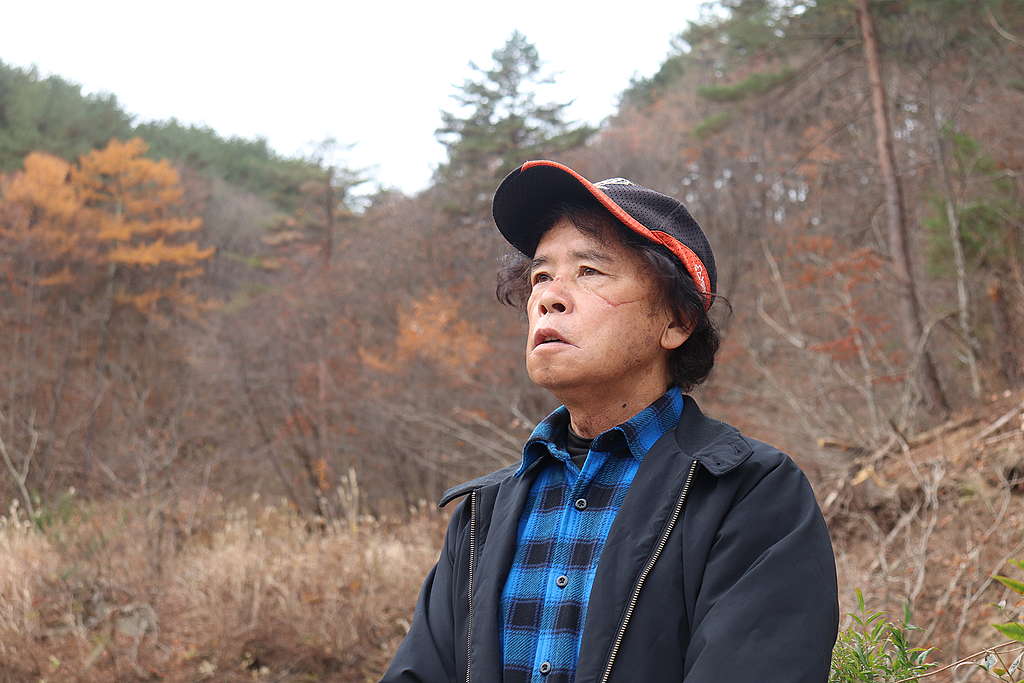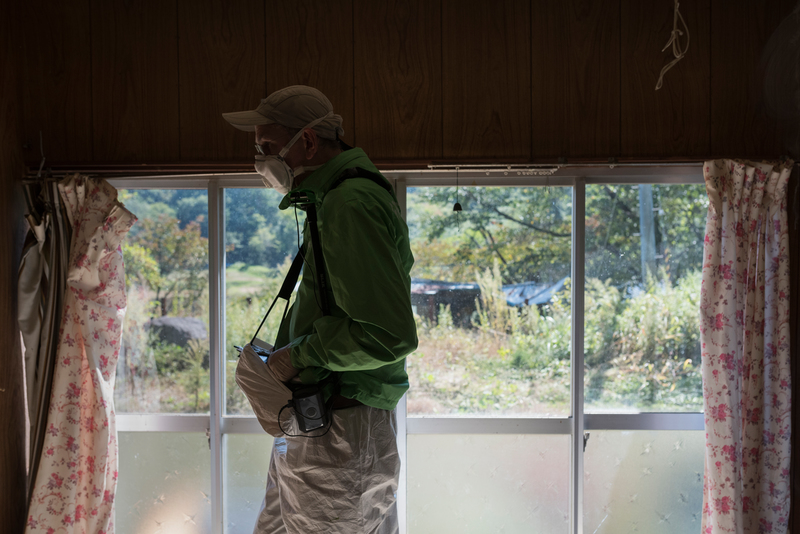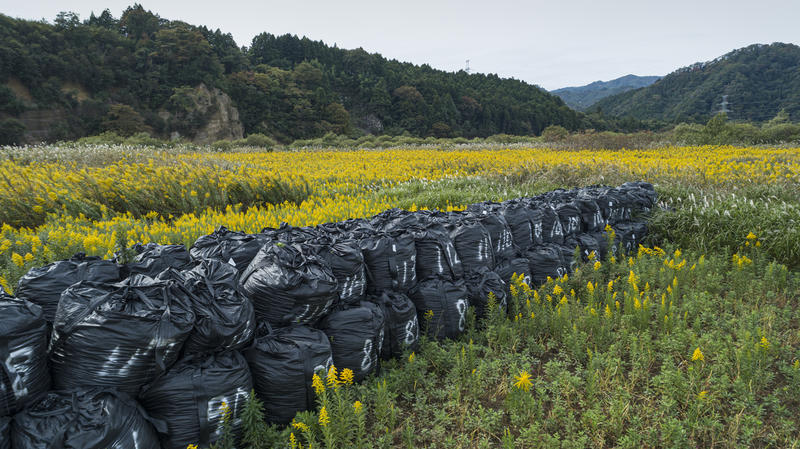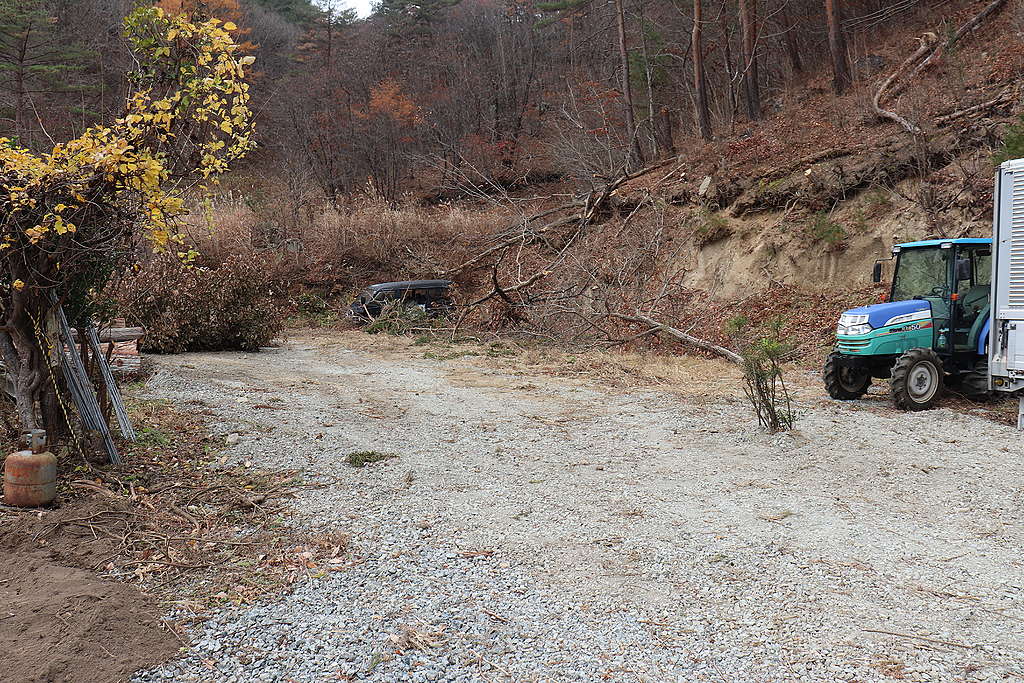Mitsuhisa Kawase

Mr. Anzai started photography as a hobby when he was in his twenties, at a time when film cameras were still in their heyday. He recalls being especially fond of taking landscape photographs, capturing beautiful rural scenes or the sun rising from in between mountains.
“I’m not a professional, but I never wanted to miss an opportunity for a photograph, so I always had my camera with me. I even took it with me to work sites with heavy machinery, so sometimes my precious camera ended up getting broken.”
Those fond days when he was able to enjoy his hobby, capturing on film the landscapes that caught his imagination, were brought to an abrupt end.
No more photographs
Mr. Anzai himself was not hurt during the Great East Japan Earthquake and Tsunami and subsequent Fukushima Nuclear disaster. Immediately after the accident, he joined search efforts to locate missing persons and saw with his own eyes a townscape completely transformed by the earthquake, and the unrecognisable bodies of victims as they were recovered from underneath buildings and rubble.
“Has anyone… has anyone… seen Granny?” The voices of family members desperately searching for missing loved ones haunted his ears.
“I always had my camera with me. And I knew that I should be taking pictures to keep a record of what was happening, but I just wasn’t able to bring myself to photograph what I saw.”

From that day, Mr. Anzai became unable to take photographs in the way that he had. Every time he picked up his camera, the scenes he saw during the rescue efforts, the destroyed townscape and the heartbreaking calls of people searching for family members, came rushing back, and his hands would freeze.
Three months after the disaster in June 2011, Mr. Anzai evacuated to Fukushima city from his house which was located 50 kilometres from the nuclear power plant. At the time, he thought that he would eventually be able to return home, however the radiation pollution was worse than imagined, and he ended up living in temporary housing for more than seven years. The temporary housing lacked facilities and he was often unwell due to the stress of living there. Overwhelmed by daily struggles, he stopped taking photographs.
Rediscovering his passion
In December 2012, Mr. Anzai was invited by a friend to visit Yamaguchi prefecture and talk about his experiences during the nuclear disaster and his subsequent day-to-day life. It was on this occasion that he met the late photojournalist, Mr. Kikujiro Fukushima. Hailing from Yamaguchi prefecture, Mr. Fukushima launched his career as a photographer documenting the lives of atomic-bomb survivors as they struggled with the after-effects of the bomb. He then went on to use his photography to expose many social issues, such as pollution, and became known as the “defiant photojournalist” for his reputation for challenging the establishment through his photography.
“You are a photographer too, right, Mr. Anzai?”
“Yes I am, but I’m not very good,” replied Mr. Anzai modestly when questioned by Mr. Fukushima. Although he loved photography to the extent that he never went anywhere without his camera, after the disaster, he found himself unable to take pictures as he wished. “And besides, I can’t bring myself to photograph things anymore,” he added as the emotions that he had been holding back suddenly spilled out.
Seeing Mr. Anzai deep in thought, the old photographer, who was 91 at the time, spoke slowly after a moment’s silence.
“There’s no such thing as a ‘good’ photo or a ‘bad’ photo. Just take photographs, whatever. 30 or 40 years later they will come to life.”
From that day onwards, Mr. Anzai started taking photos again. His lens has captured images of townscapes cleaned up through recovery efforts and other hometowns that remain evacuated with residents still unable to return. His photographs capture Fukushima seen through his eyes, undisguised and as it is. Mr. Anzai has held exhibitions in Tokyo, Fukushima and Yamaguchi, sharing his work with many people

“At some point I need to go through them all properly and sort them, but in total I think there are about 40,000 photos. I’ve also been taking videos”. There was a sense of certainty in his voice as he told me this.
Documenting Fukushima now for the future
In 2018, Mr. Anzai was left with no choice but to demolish his home in Iidate, where he had lived since his birth for more than 60 years. It was an agonizing decision he was forced into after the house fell into disrepair as his evacuation dragged on, and it became impossible to maintain or renovate. He tried to document the demolition, but as the workers did not like being photographed, he captured the last moments of his home from a distance, through a telescopic lens.
“After I demolished the house, I felt a bit down again. But I’m starting to take pictures again. When it gets warm, I’m going to go out to all sorts of places with my camera.”
Mr. Fukushima’s words, telling him to “just take photographs, whatever,” gently push him forward everytime he finds himself about to get stuck.
Currently, Mr. Anzai lives in a house in Date, Fukushima. On the surface, it appears that the peaceful life he enjoyed before the disaster has returned. However, just a short drive away are many areas classified as ‘difficult to return zones’ where the movement of people is still restricted and invisible but high levels of radiation remain.

Mr. Anzai’s hometown has been altered completely, and he has lost the house that was full of memories of time spent with his family. All he wants is to get his old life back, but he can’t. That is what the last ten years have been to Mr. Anzai.
“It is said that a single photo can move the world. I hope that I can leave a record of the Fukushima that I have witnessed, so that 50 or 100 years on in the future, people can know what happened here.”
Ten years since the disaster, while recovery efforts are progressing, memories have also faded. More and more new generations will be born who do not know what the Great East Japan Earthquake and Tsunami and ensuing nuclear disaster were like. Generations who do not know what the people who lived there went through. Mr. Anzai continues to document the ‘now’ of Fukushima so that it can be carried on into the future.
Mitsuhisa Kawase is a senior communications officer at Greenpeace Japan.

No comments:
Post a Comment
Note: Only a member of this blog may post a comment.